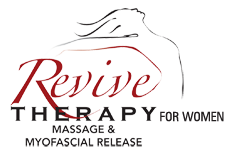More Effective and Longer Lasting Therapy
Massage or Myofascial Release? Massage is one of the most common holistic therapies for relaxation, pain relief and healing. Rubbing, tapping and other manipulation of the soft tissue increase circulation, decrease stress, relieve pain, balance hormones and provide nurturing touch. Massage effectively relaxes the body and relieves minor pain and stiffness.
Myofascial Release (MFR) is another form of holistic bodywork. It is the application of gentle sustained pressure into the fascial tissue to eliminate pain and restore motion. These techniques may be used alone or with other manual therapy techniques like massage. Myofascial Release is most effective for moderate or severe pain, tension or impaired function. Fascia. What is the fascia? The fascia is a seamless web of connective tissue wrapping around the muscles, organs and bones throughout the body. Physical injury, emotional trauma, bad posture, stress and inflammation all contribute to tightness and restriction in the fascia—a condition that throws off every other part of the body in a domino-like effect. Tight fascia can bring imbalance, pain and impaired function. Since fascia connects throughout the body, we may experience symptoms in one part of the body, when the root cause is elsewhere. (Examples: Headaches may be caused by a problem in the pelvis, or wrist pain may be caused by a problem in the neck or shoulder.) How Does Myofascial Release Work? Myofascial Release reduces pain, increases range of motion and balances the entire body. MFR utilizes special techniques that stretch the fascial tissue, effectively releasing accumulated tension and trauma. In response, the fascia becomes more flexible and “reorganizes” itself. This allows muscles and bones to return to their natural, pain-free positions, tissues to become hydrated and nourished and toxins to be released. In summary, MFR provides deeper healing and lasts much longer than massage.
Differences Between Massage and Myofascial Release:
- Full Body or Focus Work? Massage often offers a full-body experience, while Myofascial Release may focus on specific areas that need attention. Myofascial Release looks for the cause of the issue, not the symptom.
- EaLotion or Oil? Massage typically uses oil, lotion or creme for a smoother glide in Swedish style or less oil for slower, deeper work. Myofascial Release rarely uses lubricants unless massage is blended with the technique.
- Draping and Clothing? During massage, clients often remove most clothing with draping used to cover the body. In Myofascial Release, clients may wear shorts and sports bras (for women) with less draping required. This allows for better assessment before treatment, as well as more stretching and body movement during the session.
- During a massage, you can just allow the therapist to take over and you “enjoy the ride.” In an MFR treatment, you may be asked to participate and give more feedback.
- Most massages relieve stress and calm the emotions. Myofascial Release may “wake up” emotions trapped in tissues, thereby allowing you to face past issues in a safe and comfortable atmosphere for deeper and longer-lasting healing.
Different Results?
- Massage relaxes the elastic fibers in muscles while Myofascial Release goes deeper, releasing stored tension in the collagenous level of the connective tissue. This brings greater release of tight tissue with more lasting results.
- Massage increases circulation by opening superficial blood vessels, bathing tissues with valuable oxygen, water and nutrition. Myofascial Release also increases circulation, but at a level deeper in the fascia, going into the cellular level.
- Range of Motion. Massage improves flexibility by superficially loosening muscles and other connective tissues. Myofascial Release opens connective tissue much deeper than massage, allowing for a more sustained increase in motion.
- Pain Relief. Massage decreases pain by relaxing muscles, removing toxins and increasing pleasurable signals to the brain. Myofascial Release goes more to the source of pain by releasing fascial restrictions and reducing the “muscle knots,” which are comprised of shortened, dry and painful soft tissue.
- Emotional Healing. Massage is very comforting and nurturing by the very nature of the technique—caring hands providing support. Myofascial Release delivers the same feeling but can also unlock emotional trauma that has been stored deep in the fascial tissue for years or decades. This can bring a new level of healing.
Steve Metzger, RN-CMT at Revive Therapy is an advanced Myofascial Release therapist trained by John F. Barnes. He has over 35 years’ experience in healthcare. He specializes in medical-surgical, sports, women’s health therapy and holistic health maintenance.
Resources
“Massage and Myofascial Release: 10 Differences” – Article
“Massage: 5 Amazing Benefits” Article
Español: “Masaje y liberación miofascial: 10 diferencias” – Articulo

